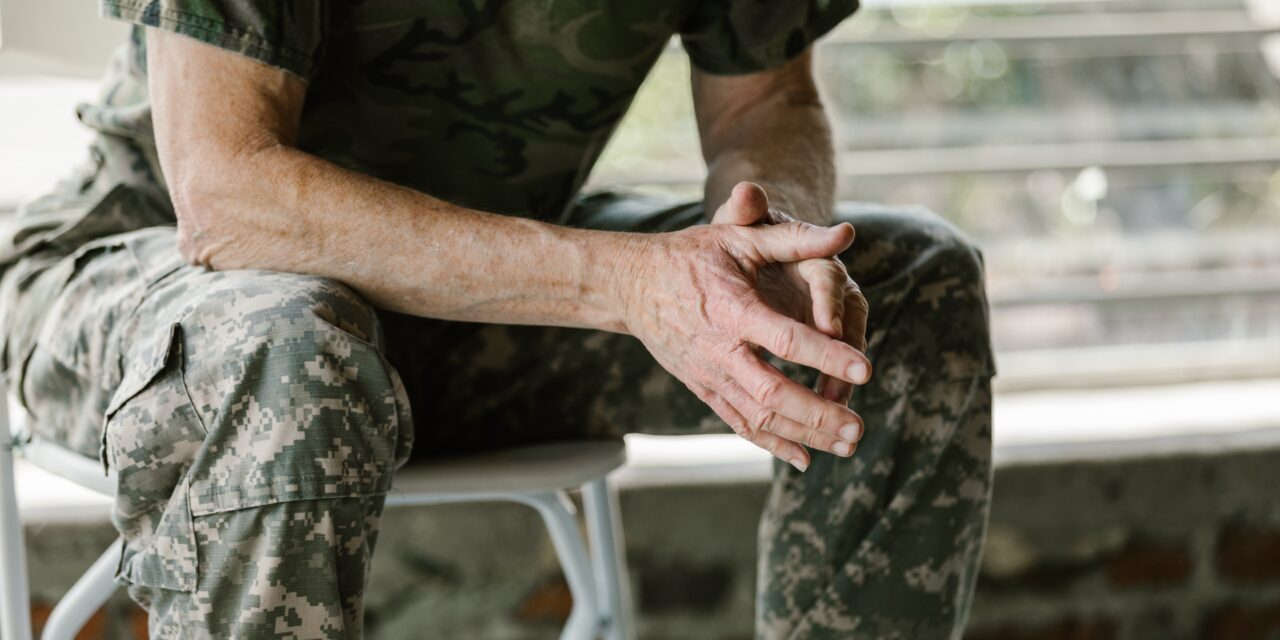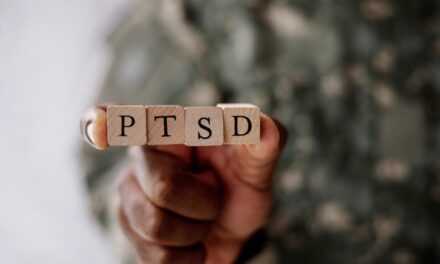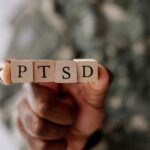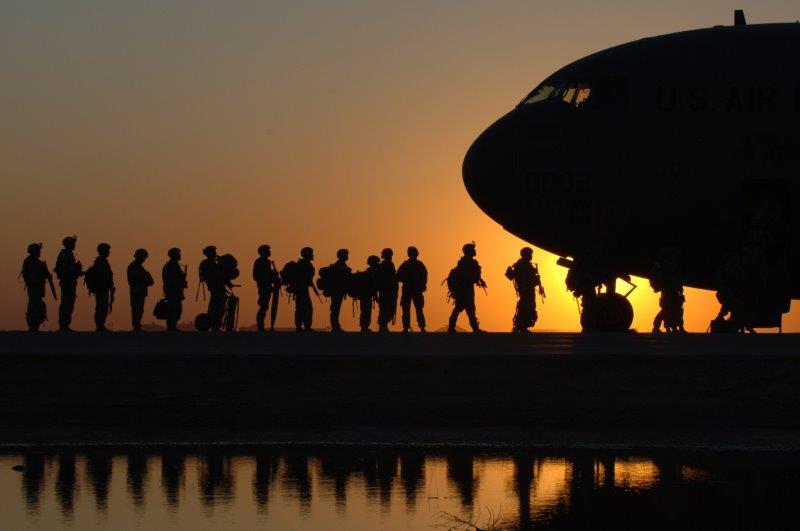According to the Centers for Disease Control and Prevention (CDC), mental health includes our emotional, psychological, and social well-being. It affects how we think, feel, and act toward the various stimuli and stressors in our surroundings. It also helps influence many aspects of a person's life, including how we handle stress, relate to others, and make healthy choices. Mental health is important to all individuals. It is even more so for a military member. Life in the military can be stressful for anyone, from a private to a general officer.
Quick Facts and Figures about Military Mental Health Problems
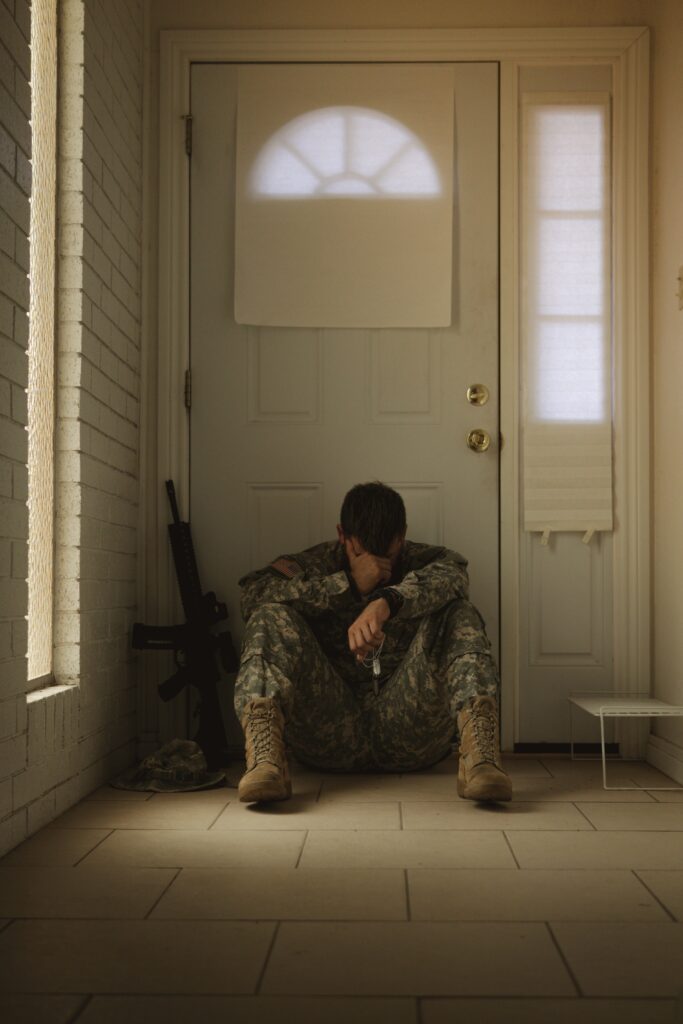
Mental illness is among the most common health conditions in the United States. More than 50% of Americans will be diagnosed with a mental condition over their lifetime, while 1 in 5 Americans will experience some form of mental illness each year. Military personnel are just as vulnerable. The Department of Defense's 2018 Health of the Force study released in 2019 with the August edition of the Monthly Surveillance Monthly Report found that roughly 16% of all military medical appointments were mental health appointments. This accounted for 1.8 million outpatient visits.
The military is a high-stress environment. Not knowing how to cope with the demands of their duty and especially during times of war, can lead service members to poor mental health and eventually mental illnesses. Soldiers are faced with numerous problems, including separation from their families and loved ones, war, instability in marriage, financial issues, and resettlement issues. These problems, together with other issues related to the military lifestyle, are common concerns to military personnel.
Trauma, use of alcohol, history of abuse, genetics, recreational drugs, isolation, and feeling lonely are all causes of mental illnesses. Many military personnel are at risk if one or more of these factors apply to them.
Common Mental Health Challenges Faced by Military Personnel
1. High-stress environments and operational demands
Soldiers in military barracks are exposed to many psychological pressures that can pose psychological and mental challenges to them and endanger their psychological well-being. Some of the stressors within their environments include:
- Not getting good rest at night
- A lack of appropriate planning in filling the soldiers' leisure time
- The unfavorable status of welfare facilities
- Inappropriate behavior of military personnel
- A disproportionate number of soldiers with needs for different parts
- Lack of considering the soldiers' expertise and ability in determining their place of service punishments against disciplinary regulations
- Non-specialized use of soldiers
2. Exposure to stressful situations, trauma, and combat stress
A study conducted by Biomed Central, published in March 2021, listed the following war-related traumatic events that potentially contribute to post-traumatic stress disorder and other military mental health problems:
- Exposure to death
- Combat stress
- Other horrible and life-threatening experiences
- Inhospitable living conditions
- Forced displacement
The U.S. Department of Veterans Affairs listed additional factors in combat situations that may contribute to Post Traumatic Stress Disorder (PTSD) or other military mental health problems, such as military occupation or specialty, the politics around the war, where the war is fought, and the type of enemy faced.
3. Barriers to seeking help and stigma associated with mental health
There is often a stigma associated with people with mental health concerns. Someone with mental illness is called crazy, dangerous, or incompetent rather than unwell. Stigma is also present when a person with mental illness is mocked or called weak for seeking help.
PTSD in Veterans: Understanding Causes, Symptoms, and Types
PTSD is common among military personnel and war veterans who have experienced traumatizing and disturbing events. To understand it better, below are some quick facts about PTSD in veterans and military personnel.
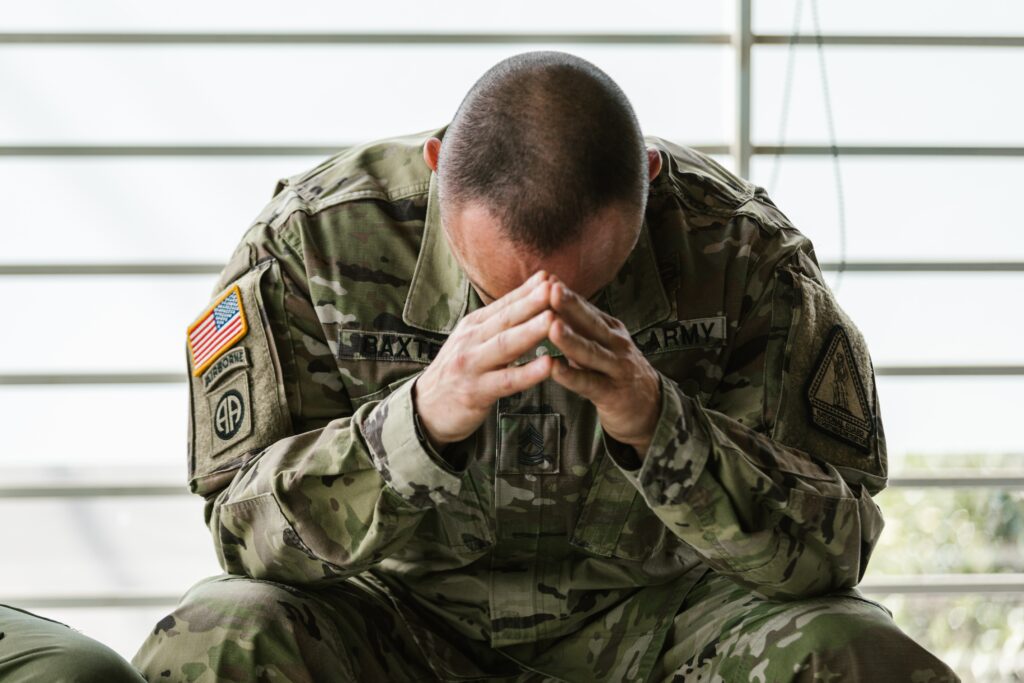
What is PTSD?
Post-traumatic stress disorder is a common response to the mental and emotional strain that can result from dangerous and traumatic experiences. It is a natural response to the wear and tear of the body and mind after long and demanding operations.
Combat Stress vs PTSD
PTSD is often confused with combat stress or battle fatigue, which can occur after someone experiences a traumatic event like war, assault, or disaster. They are different, although the symptoms of the two conditions may have similarities.
Combat stress usually happens for brief periods and is considered a normal reaction to the traumatic events that the service members underwent. With combat stress, the symptoms often disappear after a service member is back home for a few months or weeks.
PTSD is more severe. It can often interfere with a person’s daily activities and demands more aggressive treatment. It usually requires treatment sessions with a military mental health professional and methods to process difficult emotions. A person diagnosed with PTSD often experiences specific symptoms like recurrent dreams or flashbacks.
Causes of PTSD in the Military Setting
PTSD develops among military service members following a traumatic event. More severe than combat stress, PTSD may result from significant stressors unique to the military setting., such as:
- When soldiers are put in an unfamiliar context or situation
- When they are put in an actively hostile environment
- The threat of enemy attacks
- Dealing with the deaths of fellow soldiers
- Being responsible for killing another human being
- Handling human remains
- Being injured in combat
- Lengthy deployments and repeated combat tours
Common Symptoms of PTSD in Veterans to Look Out for
As pointed out earlier, PTSD and combat stress may be confused with one another because of the common symptoms that include a range of physical, behavioral, and emotional signs that include:
- Irritability and outbursts of anger
- Excessive worry and fear
- Headaches and fatigue
- Loss of appetite
- Depression and apathy
- Problems sleeping
- Changes in behavior or personality
Different Types of PTSD in Veterans
The Diagnostic and Statistical Manual of Mental Disorders, the DSM-5, gives a more specific description of PTSD: It is an anxiety disorder triggered by exposure to stressful situations, trauma, and combat activities leading to death, the threat of death, serious injury, and/or sexual violation. A multidimensional disorder with different causes and outcomes, its symptoms can appear as soon as the episode ends or even years later.
1. Normal Stress Response
In most cases, PTSD begins undetected with a normal stress response. However, it does not always lead up to a full-blown disorder. Normal stress response affects the nervous, immune, and endocrine systems and activates the body’s flight-or-freeze response.
Events like accidents, illnesses, injuries, surgeries, abandonment, and other sources of high amounts of unreasonable amounts of tension and stress can lead to this response. Usually not a major cause of someone’s day-to-day activities, normal stress response allows the body to return to pre-arousal levels after the threat or perceived threat is over. Typically, normal stress response can be effectively managed with the support of loved ones, peers, and individual and group therapy sessions, and recovery should be seen within a few weeks.
2. Acute Stress Disorder
While not the same as PTSD, acute stress disorder can occur in people who have been exposed to what feels like a life-threatening event, such as a loss of a loved one, loss of a job, risk of death, or natural disaster. Based on studies, the rate of developing this disorder varies for each type of trauma. For example, 13-21% of individuals are likely to develop acute stress disorder after a vehicular accident. Following an assault, rape, or mass shooting incident, about 20-50% of the victims would have developed the condition. The symptoms may start between three days and one month following the traumatic event. Left untreated, acute stress disorder may progress to PTSD.
Acute stress disorder can be treated through medication, psychotherapy, cognitive-behavioral therapy (CBT), group support, medication, and more intensive treatments designed by a psychiatrist. According to another study, CBT effectively reduces symptoms while decreasing the chances of the symptoms developing into PTSD.
3. Uncomplicated PTSD
Uncomplicated PTSD is associated with one major traumatic event rather than multiple ones. Symptoms of uncomplicated PTSD include a strong desire to avoid the people or places that remind the individual of the trauma, nightmares, flashbacks to the event, irritability, mood changes, and changes in relationships. Its symptoms may be similar to those of the other types of PTSD, but they don’t coexist with depression and other mental health conditions.
Uncomplicated PTSD is the most common and easiest form of PTSD to treat. It can be managed through medication, therapy, or a combination of both.
4. Complex PTSD
Complex PTSD is the opposite of uncomplicated PTSD; it is caused by multiple traumatic events, not just one. It is common in abuse or domestic violence cases, repeated exposure to stressful situations, trauma and combat stress, community violence, war, or sudden loss. Chronic trauma is linked to complex PTSD; symptoms can occur in childhood or adulthood, and they often cause problems with behavior and relationships.
Individuals with complex PTSD can be diagnosed with borderline or antisocial personality disorder, borderline personality disorder, or dissociative disorders. These individuals usually exhibit fatigue, chronic pain, aggression, impulsivity, sexual impulsivity, or substance abuse. They also show signs of depression, intense rage, panic, and other emotional problems on top of these behavioral issues.
Although they share the same symptoms as uncomplicated PTSD, treatment of complex PTSD is a little more intense and takes longer. A team of trauma specialists that delivers a highly structured design is involved in the management plan. Also, the recovery period usually happens at a slower rate.
5. Dissociative PTSD
Some people with complex PTSD experience symptoms of dissociation. They may feel detached from their surroundings, their actions, and their body. They may also experience gaps in their memory surrounding the original trauma or even regarding an everyday task.
Aside from depersonalization and emotional detachment, dissociative PTSD also exhibits more severe PTSD symptoms, including:
- Dissociative flashbacks and amnesia
- A more significant history of early life trauma
- Co-occurrence with other types of mental health conditions at higher levels
While research on treatment for dissociative PTSD is still ongoing, effective management generally involves cognitive processing therapy (CPT), narrative exposure therapy (NET), prolonged exposure (PE), reprocessing (EMDR), and eye movement desensitization.
6. Comorbid PTSD
Comorbid PTSD is a term referring to co-occurring disorders. People with comorbid PTSD are also diagnosed with one or more co-occurring mental health disorders. These conditions may include anxiety disorder, panic disorder, major depressive disorder, or substance abuse disorder. Best results are achieved when comorbid PTSD and the commingling mental health condition are treated at the same time.
Strategies for Promoting Mental Health and Psychological Well-being among Military Personnel
Government and military leaders should stay on top of their people’s well-being and be able to develop and launch strategies that will help military personnel maintain their mental health and psychological well-being. Here are some ways to do these.
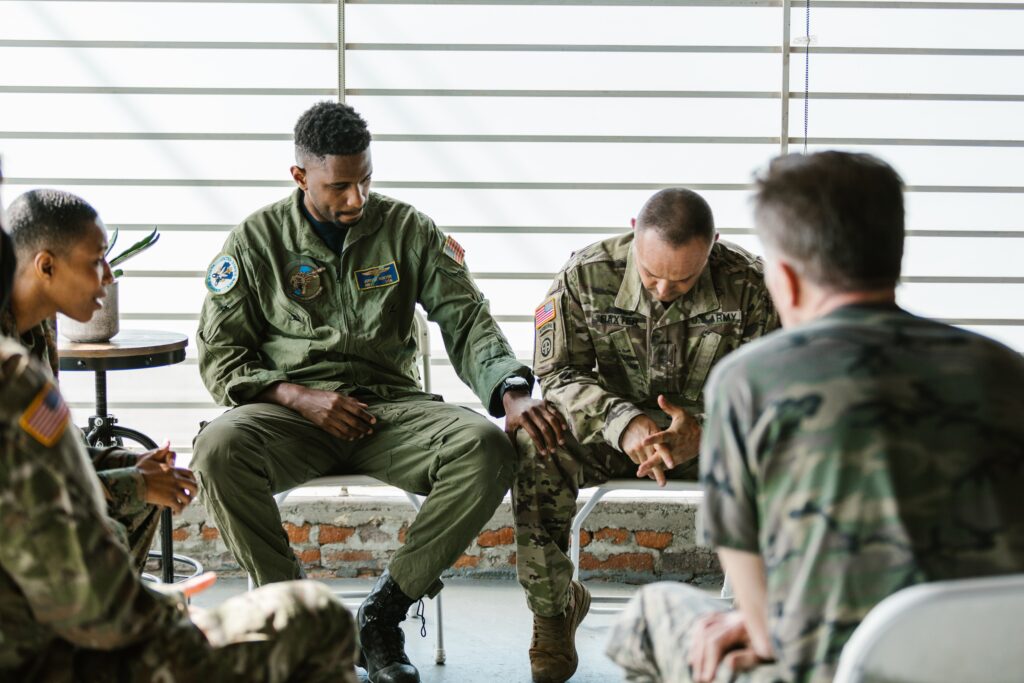
1. Launch military mental health awareness and stress management programs.
All military service members must undergo mental health awareness and stress management programs at the start of their employment and are required to attend regular training sessions on mental health and psychological well-being thereafter.
Workshops and seminars on stress management and resilience are important learning sessions that will let service members improve their skills and boost their self-confidence.
2. Provide and spread information on common mental health disorders and their symptoms.
Educating military personnel on common health disorders such as PTSD, depression, stress, anxiety, etc., including their causes, symptoms, and treatment, can let them be aware and avoid being tormented by these military mental health issues.
3. Provide resources and support services and make them aware that these resources exist.
Offer free specialized coaching, assistance, and comprehensive stress management programs to service members, as well as veterans and retirees, who need access to mental health care. Provide support services to them during times of transition, such as relocating to another assignment, returning from deployment, or preparing to leave military service to help them achieve peace of mind.
4. Set up accessible venues that offer confidential military mental health services.
Clinics within military bases should have units dedicated to mental health and with mental health professionals and counselors that are available to serve anytime. Service members should be assured of options to get confidential and stigma-free mental health support.
5. Provide telehealth services for remote or deployed personnel.
Provide online support for military personnel in remote locations or deployment. Individuals with mental health issues should be able to get help from mental health professionals and therapists.
6. Launch peer support and buddy systems.
Implement peer support programs where military personnel can connect with peers in supporting each other based on shared experiences of mental health challenges. Sharing stories and aspirations can promote mental health recovery and increase hope. Selected individuals may be trained to serve as peer supporters or mentors.
7. Encourage open discussions and foster a culture of support and understanding.
Just as in the peer support program, support groups or forums may be organized for sharing experiences and coping strategies to assist members who are going through a difficult period of recovery.
8. Launch resilience training and incorporate it into military training and education programs.
Resilience is one of the most relevant and effective concepts members coping with military mental health should learn. It is successfully adapting to challenging life experiences, especially through mental, emotional, and behavioral flexibility and adjustment to external and internal demands.
9. Teaching comprehensive stress management techniques, such as mindfulness, breathing exercises, and relaxation techniques.
All members, regardless of their mental health conditions, should have access to resources and tools for managing stress and building resilience. The following tips can help manage stress and reduce the overall stress of day-to-day activities:
- Encourage physical fitness and regular exercise as a means of stress reduction
- Use guided meditation
- Practice deep breathing
- Maintain good nutrition
- Manage time
- Connect with others
10. Promote early intervention programs, including mental health screening and counseling.
Regular mental health screenings to identify early signs of distress or mental health disorders must be implemented. Offer confidential military mental health assessments and evaluations. Provide resources and treatment options for those identified at risk.
Wrapping It Up
The military's key role is in maintaining peace and safeguarding the well-being of the nation. Military service members are exposed to multiple stressors and psychological pressures that make them vulnerable to mental health issues. The importance of promoting mental health and psychological well-being among enlisted men and women soldiers cannot be overemphasized. Appropriate resources must be allocated to ensure our modern-day patriots get the best mental health care for our nation's sake.

